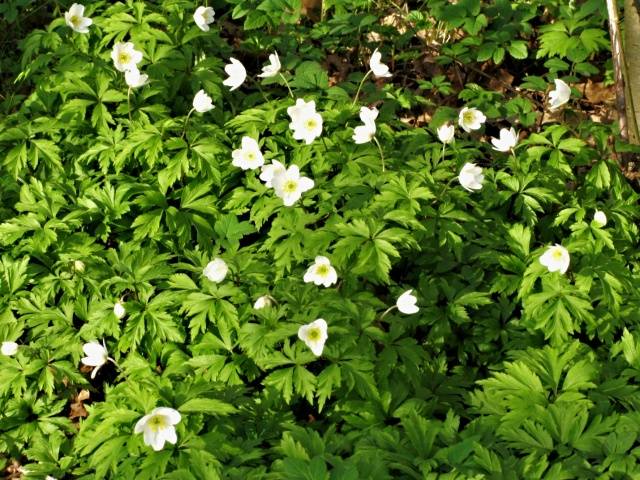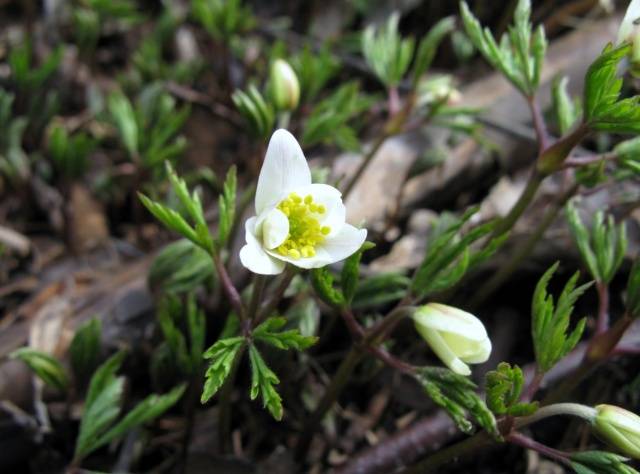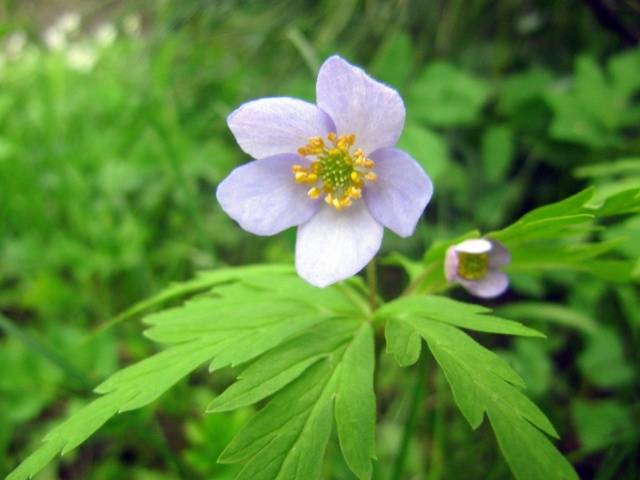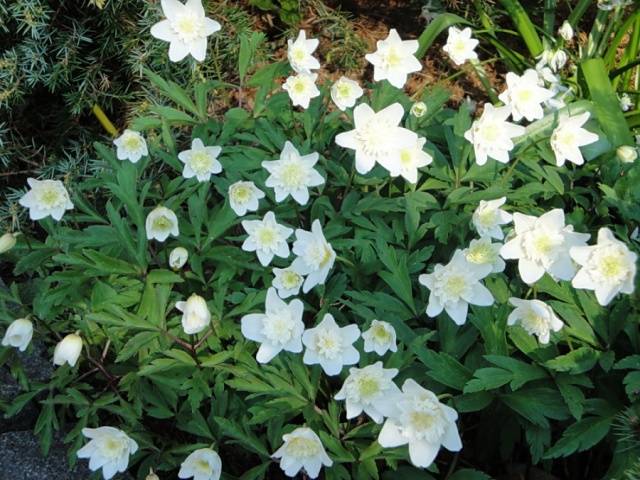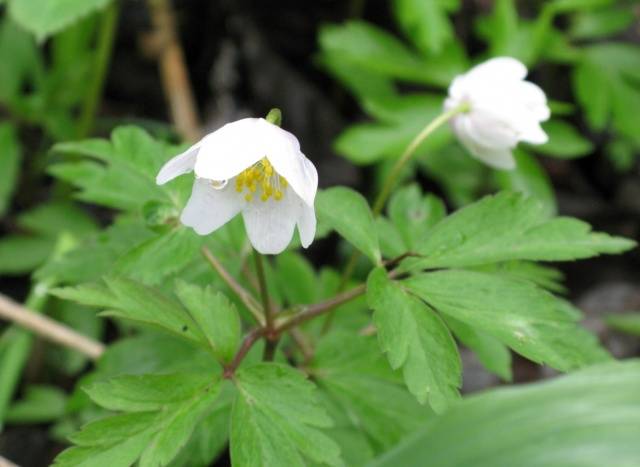Content
Anemone nemorosa or anemone nemorosa is one of the prettiest perennial herbaceous plants in our forests. Unusual flying flowers illuminating the space between trees were associated with snowdrops, which do not grow everywhere. The regional names of the anemone reflect the following fact: snow maiden, white scrub. This early flowering ephemeroid plant is hidden from view as soon as the seeds are ripe. The poetic soul of the people, fascinated by the fragile flower, created an instructive legend about the origin of the plant.
Dubravnaya anemone is a consolation for Eve. When Adam and Eve left paradise, snow fell on them, and they wept bitterly. The Creator took pity, and some of the snowflakes turned into cute flowers, as a promise of heavenly support in the earthly share. Anemone has really become an irreplaceable medicinal plant in folk medicine.
Favorite mid-spring flower
Anemone is visible among other herbaceous perennials on the forest carpet with its filigree, triple dissected leaves that form vast, brightly saturated green clumps. Peduncles depart from the rhizome one at a time, sepals are absent, so all 6-8 petals of the flower are easily amenable to the slightest breath of wind. Hence the common name of the plant - anemone. Its white, lilac or light pink single flowers, up to 2-3 cm in diameter, gracefully dance like graceful forest ballerinas, ecstatically singing the hymn to spring in the still quiet, awakening April forest. Blooming of the oak anemone continues until mid-May.
And numerous seeds, hidden in a short-haired oblong achene with an oily appendage, ripen in June - to the delight of the ants, who persistently and plant the oak tree anemone further. The plant also successfully reproduces vegetatively - its smooth, cylindrical rhizome spreads horizontally, forming picturesque thickets. The stem of the oak wood anemone is single, rarely pubescent, erect, under favorable conditions reaches 25 cm in height, surrounded by leaves with short petioles, collected in three in a whorl.
The herbaceous perennial plant anemone nemorosa indicates its habitat - deciduous forests, found on the edges of spruce forests, where oaks used to grow. It develops well on loose fertile soils. Distributed throughout Europe, in Siberia there are closely related species. Now the oak anemone or oak anemone (anemone nemorosa) is listed in the Red Book of many states, including Russia. Its beauty attracts people who, by pulling on the stem, violate the rhizome, destroying the entire wild plant. But the perennial oak anemone can live in one place for up to 50 years!
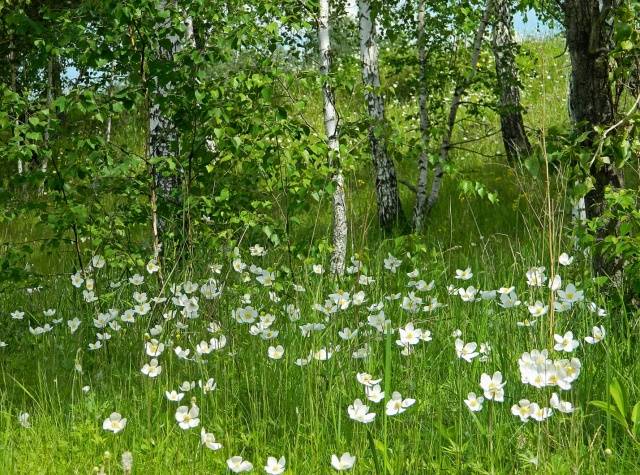
Anemones in our gardens
Wild perennial anemones are confidently gaining their place in gardens. Not only delicate flowers look spectacular, but also the carved leaves of this herbaceous plant.
They are an exquisite decoration for:
- borders located near ornamental shrubs;
- small flower beds that are under fruit trees;
- garden slides.
Harmonious neighborhood of transplanted wild perennial anemones with small varieties of bulbous plants, pansies, various primroses.For open ground, the oak anemone is a very successful herb, due to the ability of its rhizomes to spread over a large space in a relatively short time.
Plantations of oak anemones successfully develop in conditions similar to natural ones; planting and caring for perennial plants is quite simple. A little shade in the summer and streams of sunlight in the spring. Usually, for the propagation of wild-growing anemones, only pieces of rhizome with buds are taken.
It is necessary to plant to a depth of 8-10 cm in July or August, when the ground part of this perennial herb has already died out. The oak anemone is frost-resistant, ideal for open ground, because it does not require shelter for the winter. Although the flower buds that form on the rhizomes in the fall can suffer from severe frosts.
It should be emphasized that planting and caring for the numerous garden forms of anemone, which were bred by breeders, almost do not differ from the worries of growing transplanted wild plants.
- Choose a site rich in humus, with slightly acidic or alkaline loose fertile soil;
- Sometimes a little sand is added to the soil, so it becomes more water and air permeable;
- Particular attention is paid to proper watering: the land where the anemone grows should be moist, but without stagnant water;
- An ideal solution is mulching with leaves of fruit trees;
- The anemone gratefully responds with abundant flowering to fertilizing.
Plants with petals of different colors are now popular, in which the underground part is nodules, and not rhizomes. The conditions for planting and caring for them are somewhat different.
The Vestal oak anemone has a special charm. Its exclusive, large, snow-white porcelain flowers are 6 cm in diameter. The main advantage is a double raised pompom in the center of the flower, which is formed from narrow petals. Surrounded by lacy leaves, the fluffy flowers of the Vestal oak tree anemone make an indelible impression of beauty and grace. The flowering period of this perennial herb can be up to two weeks under appropriate planting and care conditions.
Primrose Healing Power
Among the characteristics of the wild anemone oakravna, one of the most valuable is the medicinal purpose of the plant. Used only in traditional medicine. It has anti-inflammatory, analgesic, anti-spasmodic and diaphoretic properties. The herb of anemone is used for diseases of the heart, stomach, as well as in the treatment of whooping cough, gout, paralysis, pneumonia, dermatoses.
Most often, anemone herb is collected for external use in the form of compresses, to alleviate the condition with rheumatism and gout. Various lotions or washes are popular in the case of non-healing wounds or dermatoses.
For infusion, the dry grass of the anemone is crushed, two teaspoons are poured into a glass container and a glass of not hot, but boiled water is poured. Insist day.
It is strictly forbidden to use any dosage forms from anemone nemorosa:
- pregnant, because its abortive properties are noted;
- ailing kidney inflammation.
Even when collecting anemone grass for external use, it is necessary to take precautions using gloves. With reckless behavior, burns to the skin and mucous membranes are possible.
The rescue of the forest beauty is in our hands
Due to its healing properties, and in our time - simply because of its unique and vibrant beauty, this wild herb with beautiful flowers is on the verge of extinction. In order not to damage nature, it is better to admire the amazingly delicate flower, to photograph it, but not to pick it.
